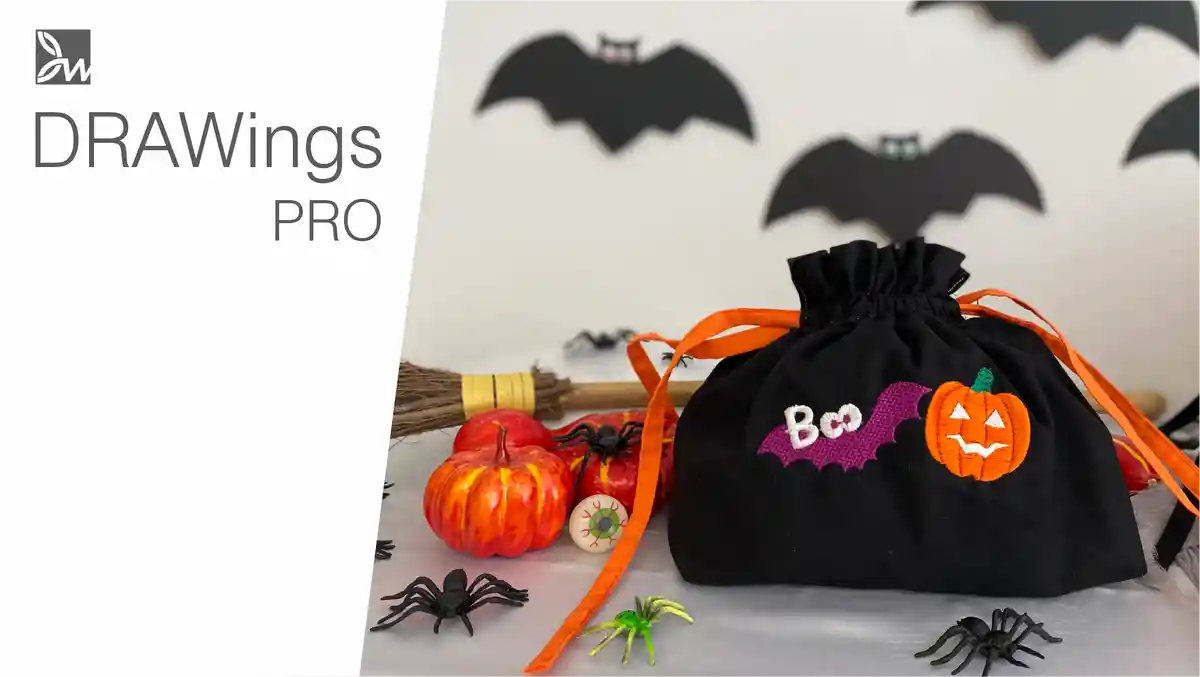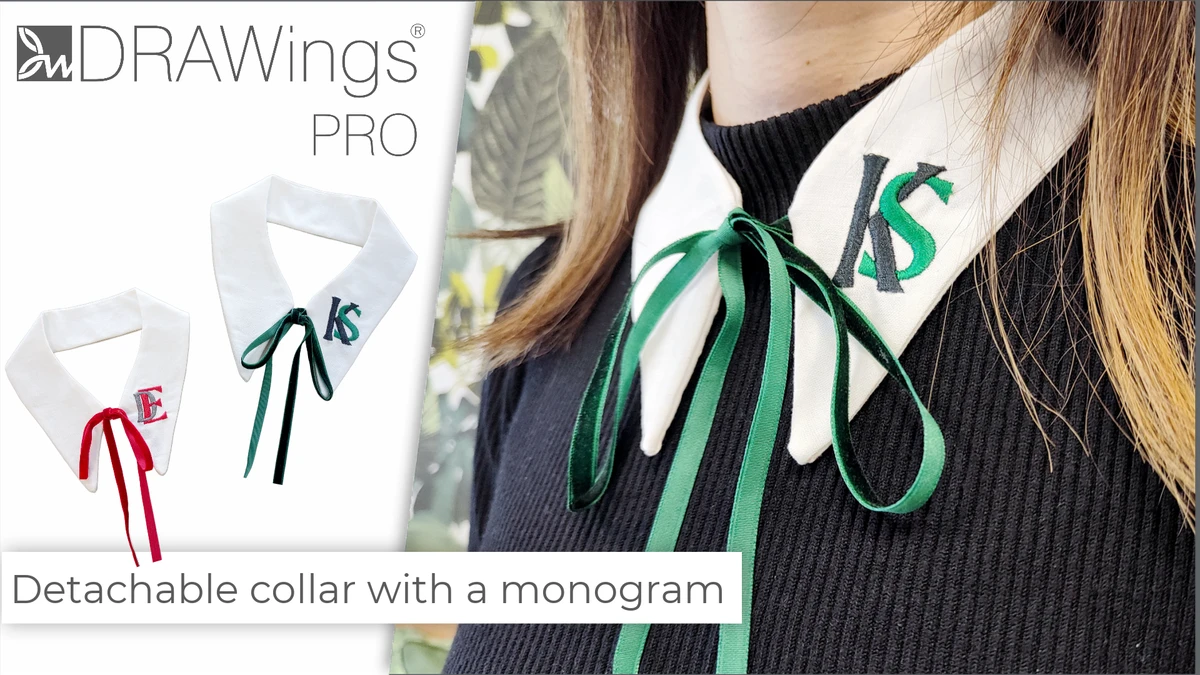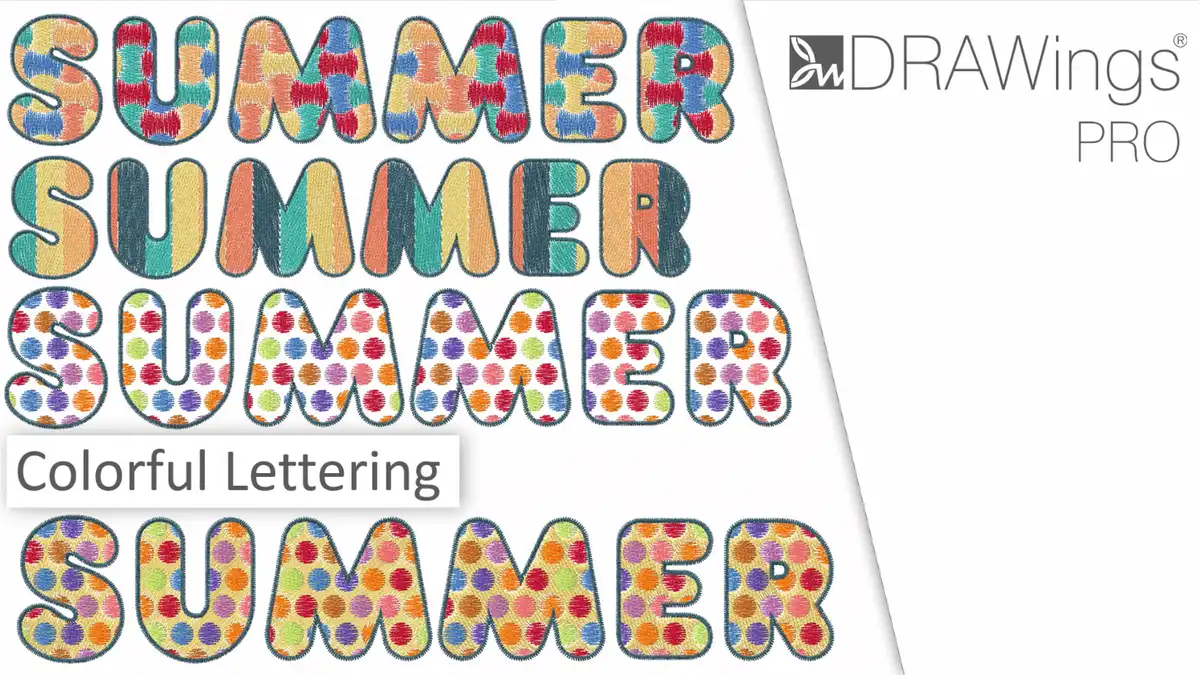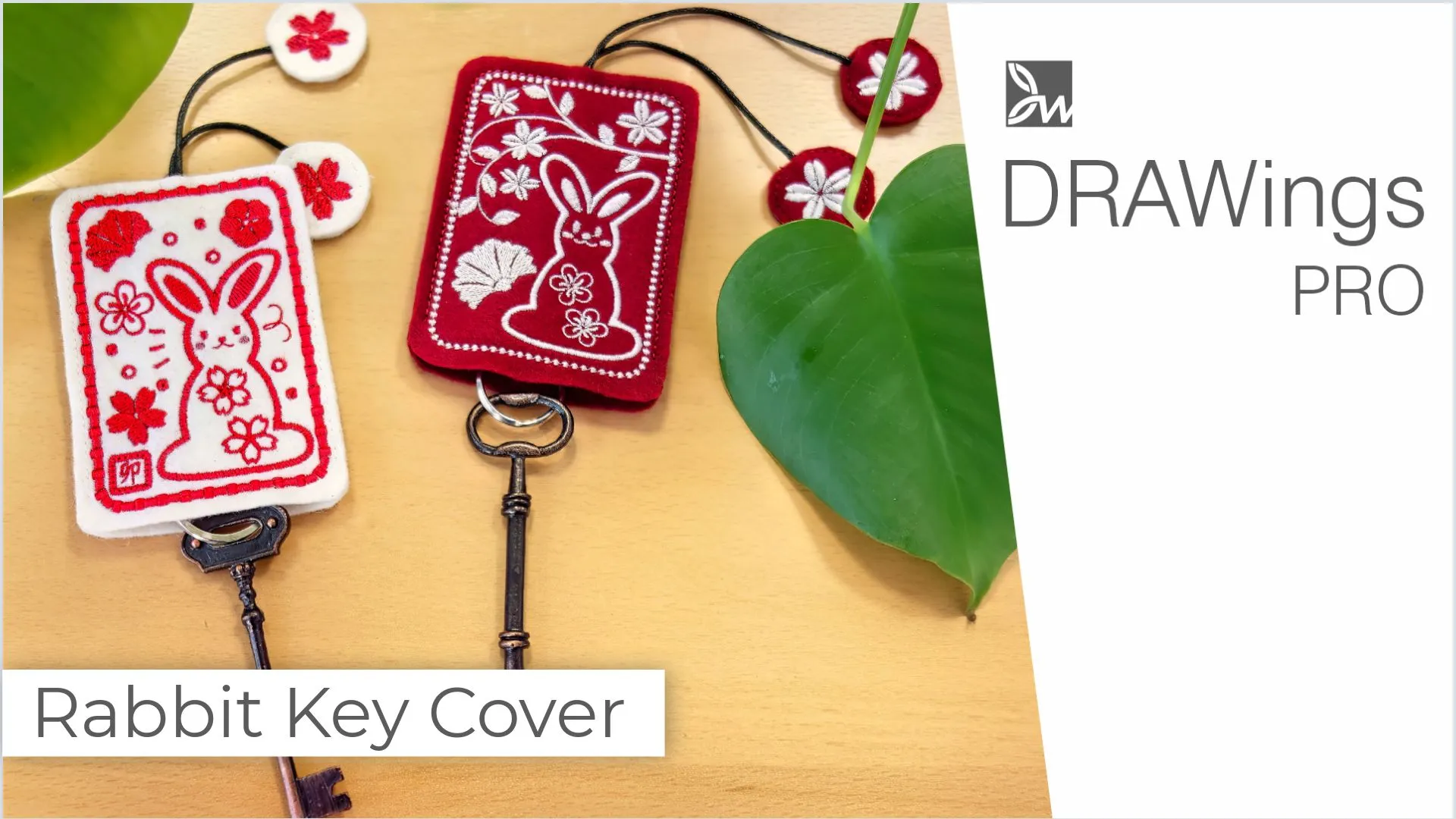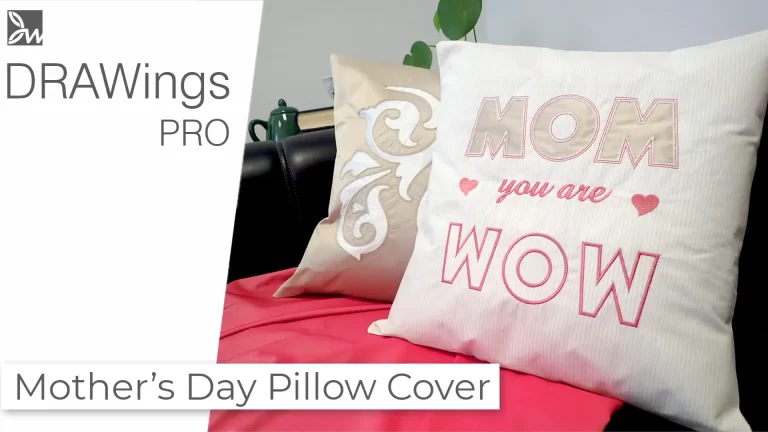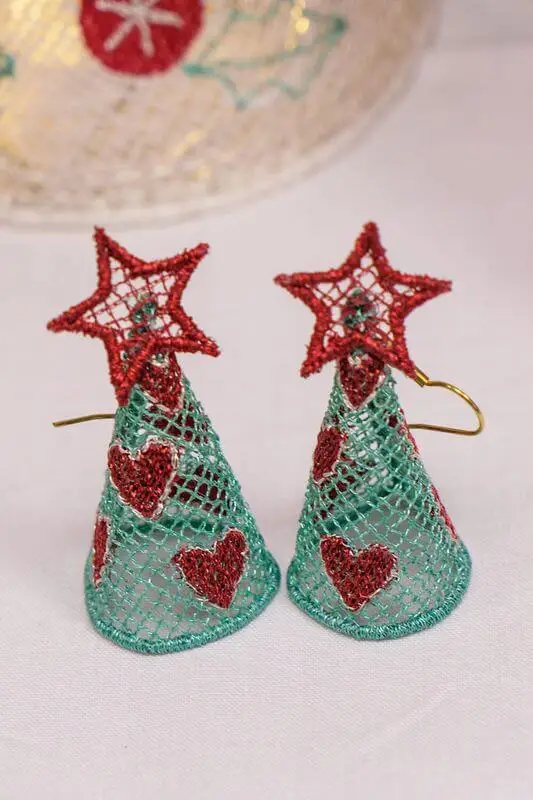DIY Embroidered Halloween Tea-Light Holders | Spooky Mason Jar Décor
How to Make Embroidered Halloween Tea-Light Holders. Halloween offers a perfect opportunity for creating fun, festive décor. One creative project that blends embroidery with home decoration is the Embroidered Halloween Tea-Light Holder. Using a combination of embroidery techniques and a simple mason jar, you can transform your home into a spooky, candle-lit space. This tutorial will guide you through the process, from selecting your design to finishing the holder, all while making use of embroidery software features to streamline the creation of the design.
In this post, we’ll explore how to craft a stunning Halloween tea-light holder by embroidering a custom design onto tulle, wrapping it around a mason jar, and finishing it with finesse. This project is beginner-friendly but detailed enough to engage more experienced embroiderers. Using the DRAWings PRO Embroidery software, you can bring your Halloween design to life on tulle, wrapping it around a mason jar to create an intricate, glowing display.
Getting Started: Design Considerations
When designing the embroidery for this project, you’ll need to think about the shape, proportions, and visibility of the final piece. Since the design will be wrapped around the circumference of the mason jar, it’s crucial that the design is wide enough to fit smoothly around the jar’s surface. The jar we’re working with has a circumference of 25 cm and a height of 10 cm, so the ideal size for the embroidered design is around 25 x 10 cm.
However, because embroidery on tulle can cause fraying at the edges, adding a couple of centimeters in both dimensions is recommended. This will give you extra space for finishing the design, ensuring that no critical parts of the design are lost to trimming. Thus, we suggest making the design area 27 x 12 cm.
Image Selection and Adjustments
If you’re using a pre-made design or one found online, make sure it fits the rectangular dimensions. For this project, square images may not work well because of the jar’s cylindrical shape. Instead, look for designs that are already horizontally oriented or can be stretched or edited to fit the dimensions.
If you’re creating a custom design, be mindful of the amount of detail in your image. Designs with too much detail can become cluttered when resized for such a small surface, so simpler designs with bold shapes are ideal.
Tip: Designs with clear areas of contrast, such as black shapes on a white background, work particularly well for this project. When lit by a candle, the light will shine through the white (or open) areas, creating a glowing silhouette effect that enhances the Halloween atmosphere.

Setting Up the Embroidery Design
After selecting your image, the next step is to prepare it for embroidery. Whether you’re creating the design from scratch or using a template, the goal is to set up the design so that only the dark areas (such as the outline of a spider, bat, or pumpkin) are embroidered, while the lighter areas remain open to let the candlelight shine through.
Importing the Image and Adjusting Size
First, import your chosen design into your embroidery software. Ensure the image is clear and that the contrast between the black and white areas is strong. Then, adjust the image to fit the dimensions of your project, approximately 27 x 12 cm.
Disable proportional scaling if necessary to manipulate the image’s width and height independently, ensuring that it wraps around the jar snugly without distorting the shapes. The image will need to be adjusted manually to avoid losing the proportions, especially if the original image is square.
Once the image is resized, hide the backdrop to get a clearer view of the stitched outline. If you’re working with layers, separate them so that you can work on each part independently.
Digitizing the Design
Now that your design is properly sized, it’s time to digitize it for embroidery. The software should allow you to trace the black areas of the image, creating embroidery stitches for only those portions. If you’re using a software program with auto-digitizing features, set the color limit to two colors (black and white), and use the trace tool to outline the black shapes.
This process ensures that only the black areas will be stitched, leaving holes in the design where the white parts are. When you place a tea light inside the jar, the candlelight will shine through these open areas, illuminating the design and casting dramatic shadows around the room.
Adjusting the Stitch Density
Embroidery on tulle can be tricky because the fabric is delicate and prone to stretching. To avoid overwhelming the tulle with dense stitching, reduce the stitch density to about 0.6. This ensures that the stitches remain lightweight while still providing good coverage for the design. Too high of a density can cause the tulle to bunch or distort, so lighter stitches are key for this project.
Pro Tip: Lowering the density also creates a softer silhouette effect, as the light will filter through the stitched areas more subtly.
Materials Required
Here’s a quick list of what you’ll need to complete the project:

- Embroidery Machine: Capable of handling in-the-hoop designs.
- DRAWings PRO embroidery software: To design and digitize the pattern.
- A mason jar (or any similar-sized glass container)
- Water-soluble stabilizer for hooping
- Tulle fabric (black or any dark color for a spooky effect)
- Black embroidery thread for the design
- Matching black bobbin thread
- A suitable embroidery hoop (large enough for a 27 x 12 cm design)
- Tea lights (real or battery-operated)
Notes:
Make sure all your materials are gathered before you begin so the process can flow smoothly. The embroidery design, measuring roughly 25 x 10 cm, will be stitched on tulle, which is then wrapped around your jar. This creates a translucent, glowing effect when a tea light is lit inside the jar, perfect for Halloween. You can use a pre-made Halloween-themed design or create your own for a personal touch.
Preparing the Hoop and Fabric
Once your design is digitized and ready, the next step is to prepare your fabric and hoop. Embroidering on tulle requires a bit of extra care, as the fabric is sheer and delicate. To support the tulle during the stitching process, you’ll need to use a water-soluble stabilizer.
Hooping the Stabilizer
Start by hooping a layer of water-soluble stabilizer. This stabilizer will provide the structure needed for the tulle to stay taut during embroidery. Make sure the stabilizer is hooped tightly, with no slack, to prevent movement while stitching.

After hooping the stabilizer, place your piece of tulle on top. The tulle should completely cover the embroidery area and be large enough to accommodate the design with some extra room for trimming.
Embroidering the Design
Now comes the fun part—embroidering the design onto the tulle. Make sure you use black embroidery thread for the top thread and the same black thread for the bobbin. Since the design will be visible from both sides, using matching upper and bobbin threads ensures that the back of the design looks just as clean as the front.
Placement Stitch
Before you start embroidering the main design, it’s helpful to stitch a placement rectangle. This will show you exactly where to place the tulle on the stabilizer, ensuring that the fabric stays within the embroidery area.
In your software, create a placement guide using the appliqué feature. Draw a rectangle in the dimensions of your design (27 cm x 12 cm), and set the fill to appliqué. This placement stitch will be the first thing your machine embroiders, acting as a guide for placing the tulle.
After stitching the placement guide, pause the machine and place the tulle over the hoop. The machine will then embroider a tacking stitch to hold the tulle securely in place.
Trimming and Finalizing the Design
Once the tulle is tacked down, pause the machine and trim away any excess tulle from around the edges of the embroidery. This ensures that there won’t be any frayed edges or loose fabric outside the design area. Be careful not to cut too close to the tacking stitch—leave a small margin to prevent the fabric from slipping during the next phase.
With the tulle trimmed and secured, resume embroidering the main design. The black areas of the image will be stitched onto the tulle, forming a silhouette that will later glow when illuminated from behind.
Adding the Finishing Touches
After the main design is embroidered, it’s time to add the finishing touches. To ensure the edges of the tulle look clean and professional, consider adding a satin serial outline around the design. This will give the edges a smooth, polished finish.
In your embroidery software, create a duplicate of the placement rectangle you used earlier. Change the stitch type to satin stitch, and increase the stitch density for a thicker, more defined outline. Set the offset to -1 mm so that the outline sits tightly against the design’s edge.
Once the satin stitch is complete, remove the hoop from the machine and carefully cut away any remaining stabilizer. Rinse the embroidery under lukewarm water to dissolve the stabilizer completely. Let the embroidery dry flat on a towel to maintain its rectangular shape.
Assembly
Now that your embroidered design is finished and dry, it’s time to assemble the tea-light holder.
Wrapping the Mason Jar
Take your embroidered piece and wrap it around the mason jar, positioning it so that the design fits snugly around the circumference. Depending on your preference, you can either sew the ends together for a seamless look or use a small amount of fabric glue to secure the edges in place.

If you prefer a more temporary option, you can simply tie the ends of the tulle together with a ribbon or piece of twine, adding a rustic, handmade touch to the design.
Adding the Tea Light
Finally, place a tea light inside the jar and light it. If you’re using real candles, be sure to place the jar in a safe location away from flammable materials. Alternatively, battery-operated tea lights are a safer, longer-lasting option that can still provide a warm glow.
Customization Ideas
One of the great things about this project is its versatility. While we’ve focused on a Halloween theme, you can easily adapt this project for other holidays or events. Consider embroidering a snowflake design for winter, flowers for spring, or stars for a summer night party.
You can also experiment with different fabric types and colors. For example, using a metallic or glittered tulle could add a festive shimmer, while a colored thread could change the mood of the design entirely.
If you’re feeling extra creative, add embellishments such as beads, sequins, or lace to the edges of the tulle for an even more intricate look.
Final Thoughts
Creating DIY embroidered Halloween tea-light holders is a fun and rewarding project that combines embroidery and home décor. By following these steps, you can use your embroidery skills to craft a unique, handmade decoration that will impress your guests and add a spooky ambiance to your space.
This project demonstrates how to utilize DRAWings PRO Embroidery software to bring custom designs to life, whether you’re an embroidery novice or a seasoned pro. By making adjustments to the design and using the right materials, you’ll create a glowing masterpiece perfect for the Halloween season.
DRAWings PRO Help Group
Happy crafting and don’t forget to share your creations with us in the
DRAWings PRO Help Group!
You can download the .DRAW file of the project and the image used, for free, from the link below:
- Project’s .DRAW file: DIY Embroidered Halloween Tea-Light Holders | Spooky Mason Jar Décor
It can open only with the XI and later versions of DRAWings embroidery software
Frequently Asked Questions
Check also, our related projects “Creating an In-the-Hoop Tablet Case with Quilted Design Using Array Fill“, “Puff Foam embroidery: Mastering 3D Embroidery on Hats“, “DIY Drawstring Backpack with Applique Decoration“, “How to Make a Detachable Collar with an Embroidered Monogram” & “Create Eye-Catching BBQ Apron Designs with Stunning PaintStitch Embroidery“













